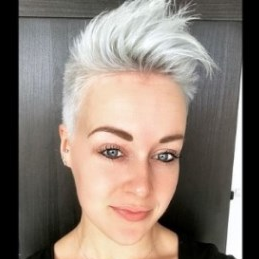Technical and Clinical Applications on Long-Axial-Field-of-View/Total Body PET-CT
A special issue of Diagnostics (ISSN 2075-4418). This special issue belongs to the section "Medical Imaging and Theranostics".
Deadline for manuscript submissions: 31 July 2024 | Viewed by 9530
Special Issue Editors
Interests: cardiovascular diseases; PET/CT; SPECT/CT; (hybrid) imaging; multimodality imaging
Special Issues, Collections and Topics in MDPI journals
Interests: clinical technology; PET methodology, processing & technology; biomarkers; (pharmacokinetic) quantitative analysis
Interests: infections; inflammatory diseases; PET/CT; imaging; (tumor)immunology; multimodality imaging
Special Issues, Collections and Topics in MDPI journals
Special Issue Information
Dear Colleagues,
PET is widely considered the most sensitive technique available for noninvasively studying physiology, metabolism, and molecular pathways in living human beings. The introduction of total body (TB)-, and long-axial-field-of-view (LAFOV) PET/CT instruments has recently initiated a new and exciting era in medical imaging. Two developments offer the potential to dramatically increase the effective sensitivity of PET. First, by increasing the geometric coverage to encompass the entire body, and a sensitivity increased by a factor up to 40 times for total-body imaging. TB/LAFOV PET/CT will allow accurate assessment of the extent of disease, particularly, including the entire axial and appendicular skeleton. Quantitative global disease assessment provided by this new PET/CT approach will be superior to conventional measurements, which do not reflect overall disease activity. TB/LAFOV PET/CT imaging may have a revolutionary impact on day-to-day practice of medicine and may become the leading imaging modality in the future. This Special Issue aims to present the role of TB/LAFOV PET/CT in the diagnosis and imaged-based therapeutic management of different (non)oncological diseases, large vessel vasculitis, and also with a focus on the technical background and developments in the era of TB/LAFOV PET/CT camera systems and quantification methodology. We encourage authors to submit both technical and clinical studies in this field. Clinical studies may include systematic reviews/meta-analysis, original retrospective studies, and prospective studies.
Prof. Dr. Riemer H.J.A. Slart
Dr. Joyce van Sluis
Prof. Dr. Andor W.J.M. Glaudemans
Guest Editors
Manuscript Submission Information
Manuscripts should be submitted online at www.mdpi.com by registering and logging in to this website. Once you are registered, click here to go to the submission form. Manuscripts can be submitted until the deadline. All submissions that pass pre-check are peer-reviewed. Accepted papers will be published continuously in the journal (as soon as accepted) and will be listed together on the special issue website. Research articles, review articles as well as short communications are invited. For planned papers, a title and short abstract (about 100 words) can be sent to the Editorial Office for announcement on this website.
Submitted manuscripts should not have been published previously, nor be under consideration for publication elsewhere (except conference proceedings papers). All manuscripts are thoroughly refereed through a single-blind peer-review process. A guide for authors and other relevant information for submission of manuscripts is available on the Instructions for Authors page. Diagnostics is an international peer-reviewed open access semimonthly journal published by MDPI.
Please visit the Instructions for Authors page before submitting a manuscript. The Article Processing Charge (APC) for publication in this open access journal is 2600 CHF (Swiss Francs). Submitted papers should be well formatted and use good English. Authors may use MDPI's English editing service prior to publication or during author revisions.
Keywords
- total body PET/CT
- LAFOV PET/CT
- technical
- clinical
- tracers








